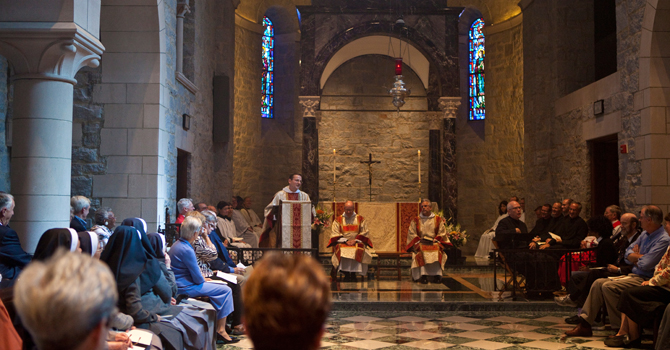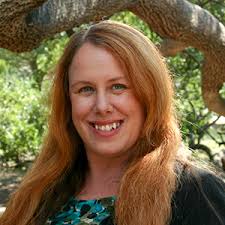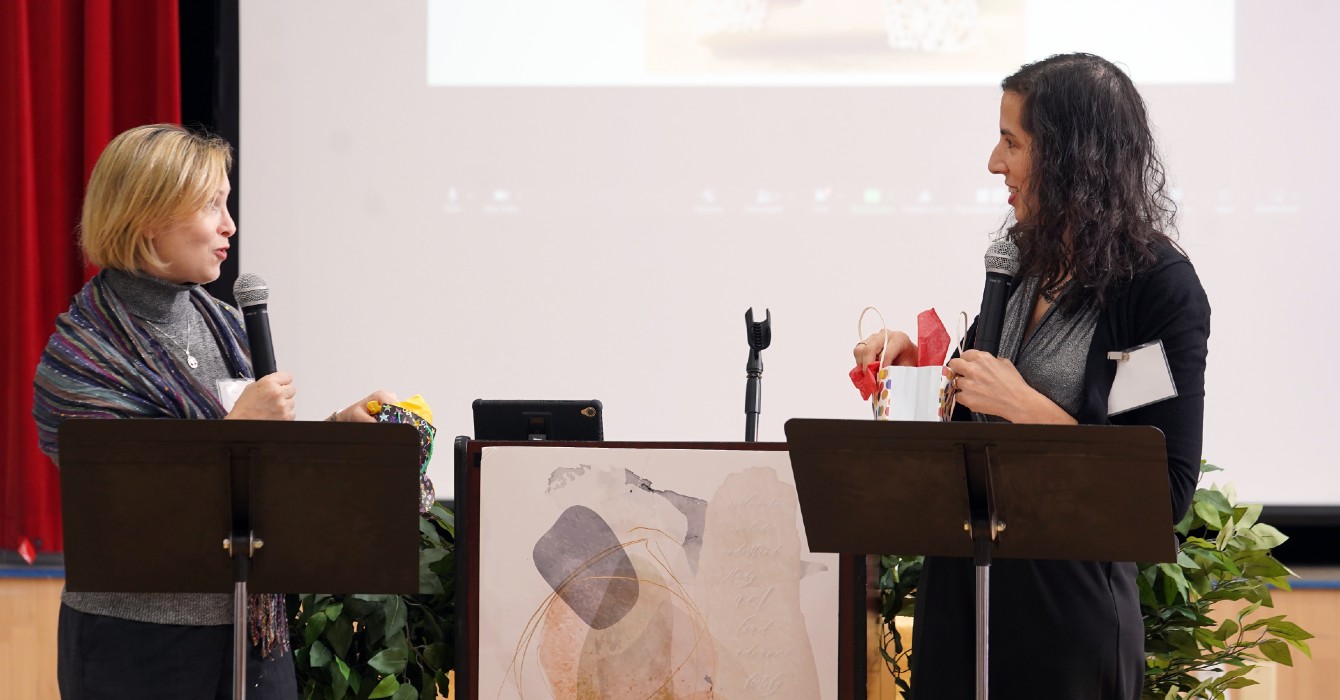In the mid-2000s, an Episcopal monastery in Harvard Square was at risk of extinction. The Society of St. John the Evangelist (SSJE) had no clear path to raise $13 million for essential building repairs, and its religious publishing business was hemorrhaging money at an unsustainable rate.
The losses “grew to a number so big that it actually threatened the viability of the whole community,” said SSJE communications director Jamie Coats.
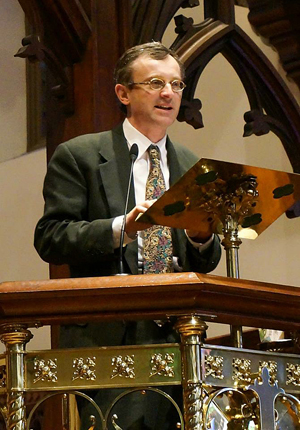
But a decade later, the future looks much brighter for this community of 13 men who dedicate their lives to prayer, brotherhood and guiding others in the spiritual life. They have come up with the necessary $13 million and completed building repairs. They’ve also seen annual fund donations climb from $500,000 in 2006 to more than $1 million now, with a yearly double-digit growth rate.
And in the process, they’ve gained a new publishing platform that reaches tens of thousands of people across the globe every day with wisdom and practices from their monastic lifestyle.
With the help of two staffers, three interns and a team of volunteers abroad, SSJE has become a creator and distributor of free online resources to guide spiritual formation. The monastery sends out daily email devotionals through its series “Brother, Give Us A Word,” curates an interactive Advent calendar and produces a yearly Lenten program that includes daily video clips of monks’ reflections as well as workbooks to guide participants.
The monastery’s turnaround has become a testament to what’s possible when ancient wisdom meets new technology -- as long as clear purposes and firm boundaries are enforced with vigor.
“It mustn’t intrude on our essential life of prayer and living in community and welcoming guests to share our life,” said Brother Geoffrey Tristram, who oversees community life as superior of the monastery. “So day to day, we’re not really thinking about the website, which is good.”
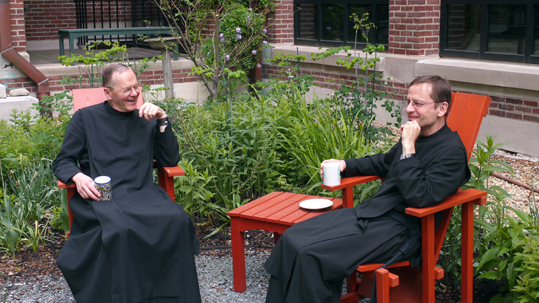
Digital distribution of ‘monk content’
The monks, who stop whatever they’re doing and worship together at least four times a day, have discovered a market for insights born of their relatively simple, disciplined lives. Those craving to know peace, freedom and God flock to hear a simple, inspiring word from those who still make time in specific hours for the holy. Grateful for what they’ve received, seekers commonly donate to the community.
Sharing spiritual riches and receiving charity in kind have been staples of monastic business models since the desert fathers withdrew to caves in the Egyptian desert in the second century.
But one factor makes 21st-century pilgrims very different from ancient ones: now they’re arriving virtually, via the Internet. Today’s brothers are distinct, too, insofar as they’ve learned to be as hospitable in cyberspace as they are when someone arrives at their doorstep on a cold winter night.
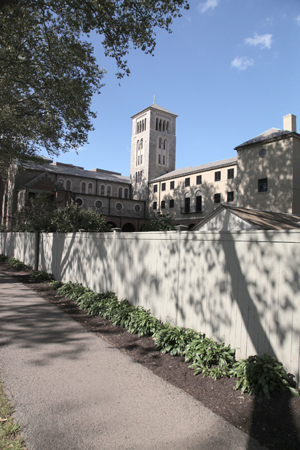
At the center of their outreach is the digital distribution of what Coats calls “monk content.” Pearls of monastic wisdom go out daily via email to 25,000 subscribers and via social media such as Twitter and Instagram. The result is a type of content that is rare in the online world: wise reflection from cloistered souls who, ironically, do not use Twitter or Instagram themselves.
“For the brothers, we have this enclosure -- or ‘good boundaries’ -- which is vital,” Brother Geoffrey said.
“That’s something we help other people incorporate into their own lives. I think everybody needs these boundaries: times to turn off and times to stop.”
‘Brother, Give Us A Word’
The new media outreach ministry began with podcasting sermon content in 2007, shortly after SSJE sold its Cowley publishing imprint to Rowman & Littlefield. Though the monks had been publishing religious texts since their order’s inception in Oxford, England, in 1866, the operation was expensive to maintain and had become far less needed in an age when people could find quality theological writings on the Web.
“We were mostly publishing other people” under the Cowley imprint, said Brother Curtis Almquist, who’s overseen communications during his 30 years as an SSJE monk. “What we discovered was, if people want to connect with us, what they want is us. They don’t want some other people.”
The brothers were already generating content as part of the rhythm of their life. They take turns preaching twice a week at services open to the public in Cambridge, in addition to services at Emery House, a retreat facility on 140 acres in West Newbury, Massachusetts.

As SSJE began posting sermons and tracking user metrics, staffers soon realized they had a treasure on their hands -- one they could slice, dice and share in bite-size pieces for their followership.
“There’s a big difference between sharing who you are, sharing what you have to offer and trying to sell it,” said Elizabeth Drescher, a professor at Santa Clara University and co-author of “Click 2 Save: The Digital Ministry Bible,” which cites SSJE as an exemplar community.
“Exploiting the church for personal gain -- you don’t see that with the Society of St. John the Evangelist,” she said. “Instead, you see people saying, ‘Hey, we get that this is how the world is doing it. We’re still doing what we do in our monastery. … We’re just sharing that in a really open way.’”
In 2011, they began offering a daily meditation called “Brother, Give Us A Word.” An online devotional, it featured brief excerpts from monks’ recorded sermons and was consistently inspirational in tone. Each day’s offering drew efficiently on already archived material, Coats said, and required no new investment of the monastery’s most precious resource: “monk time.”
But the monks didn’t stop there. In 2013, they began taping custom videos for what has become an annual Lenten series. This year’s program, which has generated 20,000 workbook sales (at cost) and 7,000 subscribers to the daily feed, draws on gardening metaphors.
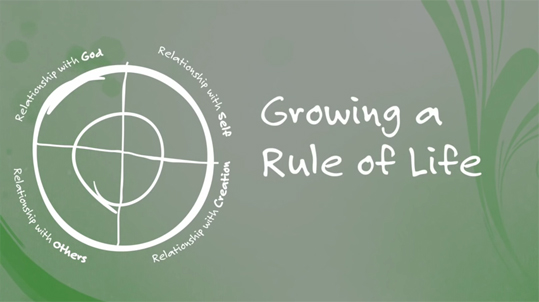
Each two-minute video features a monk guiding viewers to take the next step in growing their own “rule of life.” The logic is that if a rule of life (or daily regimen of prayer and other practices) can help monks find freedom and joy by ordering their days, then maybe it can work for the rest of us, too.
Seeking wisdom and expertise from others
As spiritual directors, the SSJE brothers are keen listeners who bring that skill to bear in shaping their new media ministry. Part of the monks’ secret involves drawing on old-school church dynamics to stay connected with their ever-growing following.
On a stormy February evening, about 75 intrepid souls braved a wind-swept rain to worship at one of two weekly Eucharist services where a brother preaches a sermon in the monastery’s stone chapel on the Charles River. With the scent of incense in the air, they listened as Brother Geoffrey preached a practical sermon that would soon become an online resource for the Lenten series. Designate the same time each day for prayer, he prescribed. Care for your body. Take time to marvel at God’s creation or works of art.

Later, a small group followed him downstairs to eat clam chowder and question the superior. “As with prayer, should I exercise at the same time every day?” “How can I stop checking Facebook on my smartphone when I first wake up in the morning?”
“You might put your phone in a drawer and lock it shut” before bedtime, Brother Geoffrey suggested. “Whatever it takes to change the habit is what you need to do.”
The monks also elicited input from the Rev. Lynn Campbell, the associate rector at Christ Episcopal Church in Needham, Massachusetts. She shared how church leaders struggled to find the right words to introduce the brothers’ programs to their congregants. The following year, Lent materials came not only with a facilitator’s guide and workbook but also with prepackaged language to help clergy introduce it to their congregations.
“Putting together a really quality Lenten program like the brothers do is probably out of our bandwidth,” Campbell said. She appreciates that the free program suits a range of people in her congregation and that it works for individuals and those using it in group settings.
The monks know their limits and bring in experts to fill the gaps. For example, the gardening motif in this year’s Lenten program came from Virginia Theological Seminary’s Center for the Ministry of Teaching, where pedagogy experts turned the monks’ wisdom into a manageable daily curriculum. The center has also helped monks assess what’s effective and what’s not.
“Because SSJE is trusted, they have moved the needle for a lot of older church people in terms of social media engagement,” said Lisa Kimball, the director of the VTS center. “People [followed] SSJE into new practices and new media because it was SSJE.” Older people would simply subscribe to the email and click links if they wanted more.
Flexible content that appeals to young and old
For two years, the monks have been offering #AdventWord, an interactive Advent calendar. Each day in Advent, the monastery releases a word, such as “care” or “light.” Followers worldwide then pair the day’s word with images of their choosing and post them on social media sites with hashtags, e.g., #AdventWord #care.
Monastery staff then curate responses on a website and distribute a select few with the next day’s email for what becomes, in effect, a digital Advent calendar.
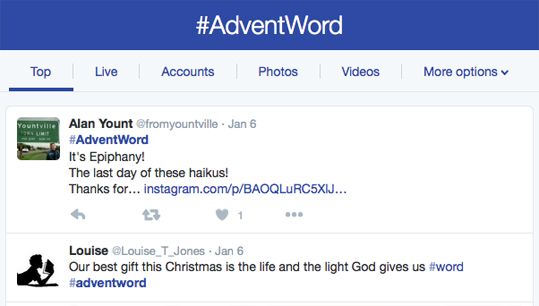
The campaign has energized Advent for young adults as well as creative tech-savvy types like Suzanne Wagner, a United Church of Christ pastor at Orange Congregational Church in Orange, Connecticut.
During last year’s Advent, she eagerly anticipated each day’s word, stayed alert with a camera and shared what she found. For “care,” she snapped a shot of a couple embracing on a hill overlooking New Haven. Her heart jumped when she saw the monks circulating her photo the next day.
“I loved it,” Wagner said of her #AdventWord participation. “I just felt so full of joy being able to use these words, contemplate and then use what I love to do, which is look at photographs and take photographs and work with them.”
As SSJE resources become more user-friendly with time, the flexibility suits the intergenerational community of Grace Episcopal Church in Medford, Massachusetts. The congregation has older members who appreciate the printed workbooks, transcriptions of the monks’ videos and meetings on Sundays to discuss and pray about the materials.
Young and middle-aged adults, meanwhile, tend to find SSJE’s video and text resources online and do them whenever time permits. Some even take part in #MedfordLent, which is Grace’s answer to #AdventWord -- a daily calendar that invites locals to snap and share photos that convey themes of the journey to Holy Week. To some extent, it unites all who follow the hashtag.
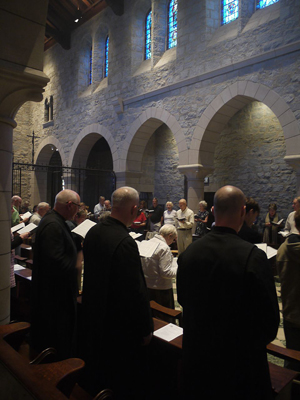
“I’m really glad there are all these different ways to plug in,” said Mia Benjamin, a ministry intern at Grace. “People who are interested in meditating on their individual walk can do that in community because of Facebook. And then for people who are not interested in technology, there’s still this old-school, getting-together-and-praying-together-on-Sundays opportunity.”
The monks’ content has also inspired tie-in innovations. The Diocese of Ohio saw a need to involve children of parents who are growing a rule of life this Lent and so give the kids related experiences to discuss with mom or dad. The diocese’s experts on children’s education adapted the SSJE materials for kids and made that resource available to the brothers to distribute freely.
“If there were other adults using the adult program, why not make this children’s program available and not have people trying to re-create the wheel?” said the Rev. Vincent Black, the canon for Christian formation in the Diocese of Ohio.
Protecting the prayerful lifestyle
While followers grow their rules of life in Lent 2016, monks are navigating challenges that come with growing visibility on the Internet. In a world hungry for their content, everything they preach is recorded, archived, published and mined for nuggets that can be tweeted or emailed.
Monks try not to let the new media outreach unsettle the rhythm of their lives, but that’s not always doable. Recording the Lenten series in July or August means pondering seasonal themes more than six months in advance. Monks must now live summer and think Lent at the same time, which Brother Curtis describes as “a stretch.”
“The ‘up’ side is we are anticipating, integrating, praying our way into a new season much in advance,” he said in an email.
Another upside: more online visibility puts SSJE on the radar for men who feel a monastic vocation. All five who have joined the order since 2009 found the monastery through an online door, Coats said.
With vigilant enforcement of boundaries, SSJE continues largely as it always has. Rather than monitor feedback constantly, the monks digest a single weekly compilation of feedback on their sermons. Beyond that, they trust that what makes their wisdom cherished is how it stems from an alternative, prayerful lifestyle.
“That light comes through in their being and their personality and their expression of their faith,” Campbell said. “You can’t fake that.”
Questions to consider
Questions to consider
- Technology offers a way for the SSJE monks to share ancient wisdom -- an example of traditioned innovation. Could you find ways to pair traditional practices with new technology in your work?
- At first glance, it seems contradictory that the brothers connect with tens of thousands of people daily while maintaining a simple, prayerful lifestyle. Are there seeming contradictions in the life of your organization that could be bridged in fruitful ways?
- Brother Tristram says that the social media project "mustn’t intrude on our essential life of prayer and living in community and welcoming guests to share our life." Which parts of your organization's life must be protected and guarded? Which parts could be changed? How can you set those boundaries?
- The monastery doesn't attempt to do all the work of dissemination itself, but relies on partners. Where could your organization find trusted partners to share the workload and offer expertise and counsel?

